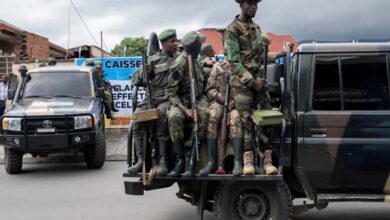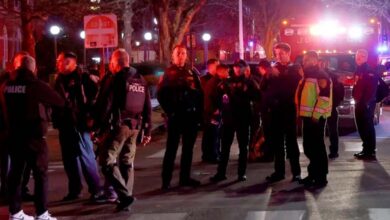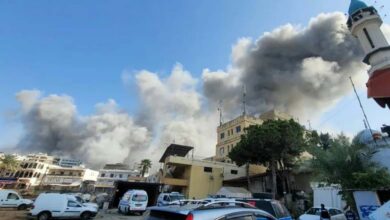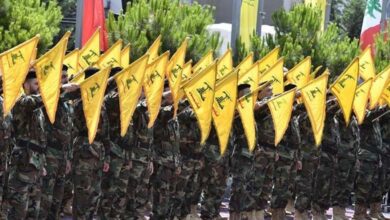Al-Assad’s regime secretly moved a mass grave to conceal killings
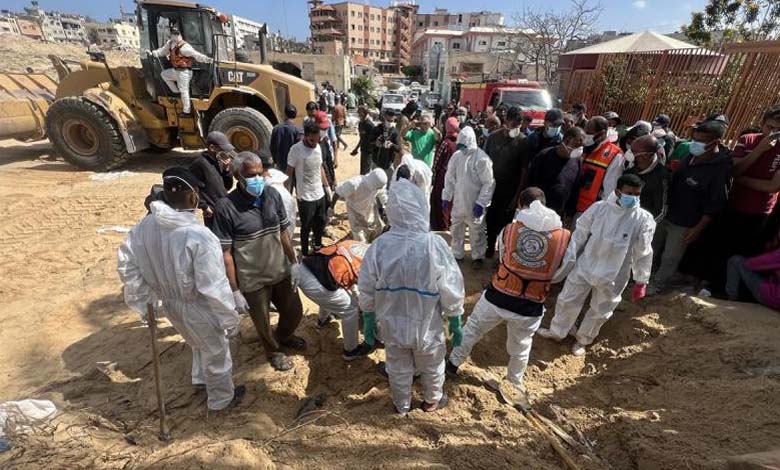
The mass grave in the Al-Dumayr desert contains 34 trenches stretching two kilometers and is believed to hide the remains of tens of thousands of soldiers and prisoners who died in al-Assad’s prisons and military hospitals.
-
British Newspaper Reveals Attempt to assassinate al-Assad through Poisoning
-
Bashar Al-Assad: Details of the Final Days in Syria
A Reuters investigation concluded that the government of former Syrian President Bashar al-Assad carried out a two-year secret operation to transfer thousands of bodies from one of Syria’s largest known mass graves to a hidden site more than an hour’s drive away in the remote desert.
It had never before been revealed that the army under al-Assad had dug the mass grave in Qatifah and a second, even larger one, in the desert near Al-Dumayr.
To identify the Al-Dumayr site and gather detailed information, Reuters interviewed 13 people directly involved in the two-year transfer, reviewed documents prepared by officials, and analyzed hundreds of satellite images spanning several years.
-
More than 7,000 Syrians in Jordan return to their country after al-Assad’s fall
-
Where Are Maher al-Assad and Ali Mamlouk Hiding? What Are Their Plans?
The transfer of bodies from Qatifah to another secret site dozens of kilometers away was code-named the “Soil Transfer Operation” and lasted from 2019 to 2021. Witnesses said the aim was to conceal al-Assad’s crimes and polish the government’s image.
On Tuesday, Reuters presented the current Syrian government with the findings of its investigation. No response has yet been received.
Reuters did not disclose the precise location of the grave to reduce the risk of tampering. A special report explaining in detail how the al-Assad government conducted the operation, and how journalists uncovered it, will be published soon.
-
The Houthis Struggle to Avoid al-Assad’s Fate… What Are They Doing?
-
Key Leaders of the “al-Assad Regime”: Where Are They Now?
The Al-Dumayr mass grave was found to contain at least 34 trenches, stretching two kilometers, making it one of the largest excavated during the Syrian civil war. Witness accounts and the site’s dimensions suggest tens of thousands of people may be buried there.
The al-Assad government began burying bodies in Qatifah around 2012, at the onset of the civil war. Witnesses said the grave held soldiers and prisoners who had died in al-Assad’s prisons and military hospitals.
A Syrian human rights activist had published photos in 2014 revealing the existence and general location of the Qatifah grave. Its precise location was only later confirmed through court testimony and other reports.
-
Decoys and Fake Helicopters: New Details Emerge About al-Assad’s Escape from Syria
-
Al-Assad Revealed Turkey’s Role in His Overthrow to Iran
Witnesses involved said that between February 2019 and April 2021, six to eight trucks carrying soil and human remains made weekly trips from Qatifah to Al-Dumayr, about four nights each week.
Reuters could not confirm whether bodies from other locations were also moved to the site, nor did it find documentation on the “Soil Transfer Operation” or mass graves in general.
All participants recalled the overwhelming stench. They included two drivers, three mechanics, a bulldozer operator, and a former officer of al-Assad’s Republican Guard.
Al-Assad, now residing in Russia after his regime fell in late 2023, and several military officials named by witnesses, could not be reached for comment.
-
Secret Turkish Deals with Russia and Iran Accelerated al-Assad’s fall
-
Russia Reduces Military Presence in Syria Following al-Assad’s fall
According to the former officer, the idea of moving thousands of bodies emerged in late 2018, as al-Assad neared victory in the civil war. Al-Assad hoped to restore some measure of international recognition after years of sanctions and allegations of atrocities.
Drivers and the officer said they were told the purpose was to clear the Qatifah grave and erase evidence of mass killings.
By the time al-Assad’s regime collapsed, all 16 trenches documented by Reuters in Qatifah had been emptied.
Syrian rights groups estimate more than 160,000 people disappeared under al-Assad’s vast security apparatus, most believed buried in dozens of mass graves he ordered dug. Systematic excavation and DNA analysis could provide answers and relieve one of Syria’s deepest wounds.
-
The fall of Al-Assad Sparks Political Debate in Iran
-
The fall of al-Assad’s Regime: Will It Affect Russia’s Influence in the Region?
Yet with scarce resources, even known mass graves remain unprotected and unexcavated. The new authorities, who ousted al-Assad in December, have not published any records of the buried, despite families’ demands.
Mohammed Reza Jalkhi, head of the National Commission for the Missing, said: “We are dealing with an unlimited number of missing people, perhaps tens of thousands. We need to train forensic and DNA experts, which takes time.”
Raed Saleh, Minister of Emergencies, told Al-Watan newspaper in August: “The wound will remain open as long as mothers await the graves of their sons, wives those of their husbands, and children those of their fathers.”
-
After Al-Assad’s Fall… Syria Closes Its Doors to the Houthis
-
“Bashar al-Assad’s Fall: The Map of Armed Groups Under the Banner of ‘Hay’at Tahrir al-Sham’”
Mohammad al-Abdallah, executive director of the Syrian Center for Justice and Accountability, said the haphazard transfer of remains was devastating for families. “Reuniting these bodies with families will be extremely complex,” he said, while calling the creation of the Missing Persons Commission a positive step.
Witnesses confirmed that revealing the operation meant certain death. One driver summarized: “No one could disobey orders, or you ended up in the trenches yourself.”



